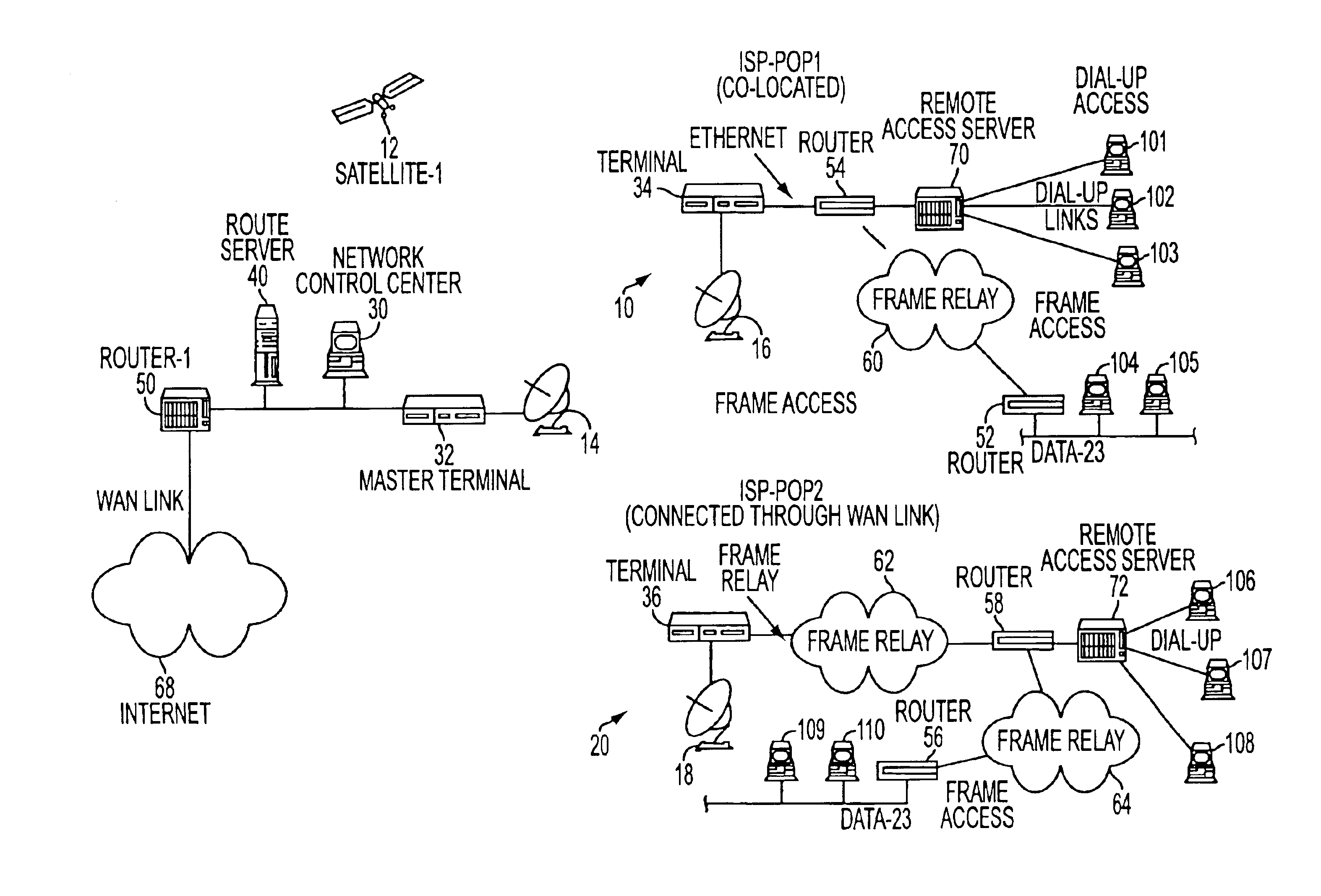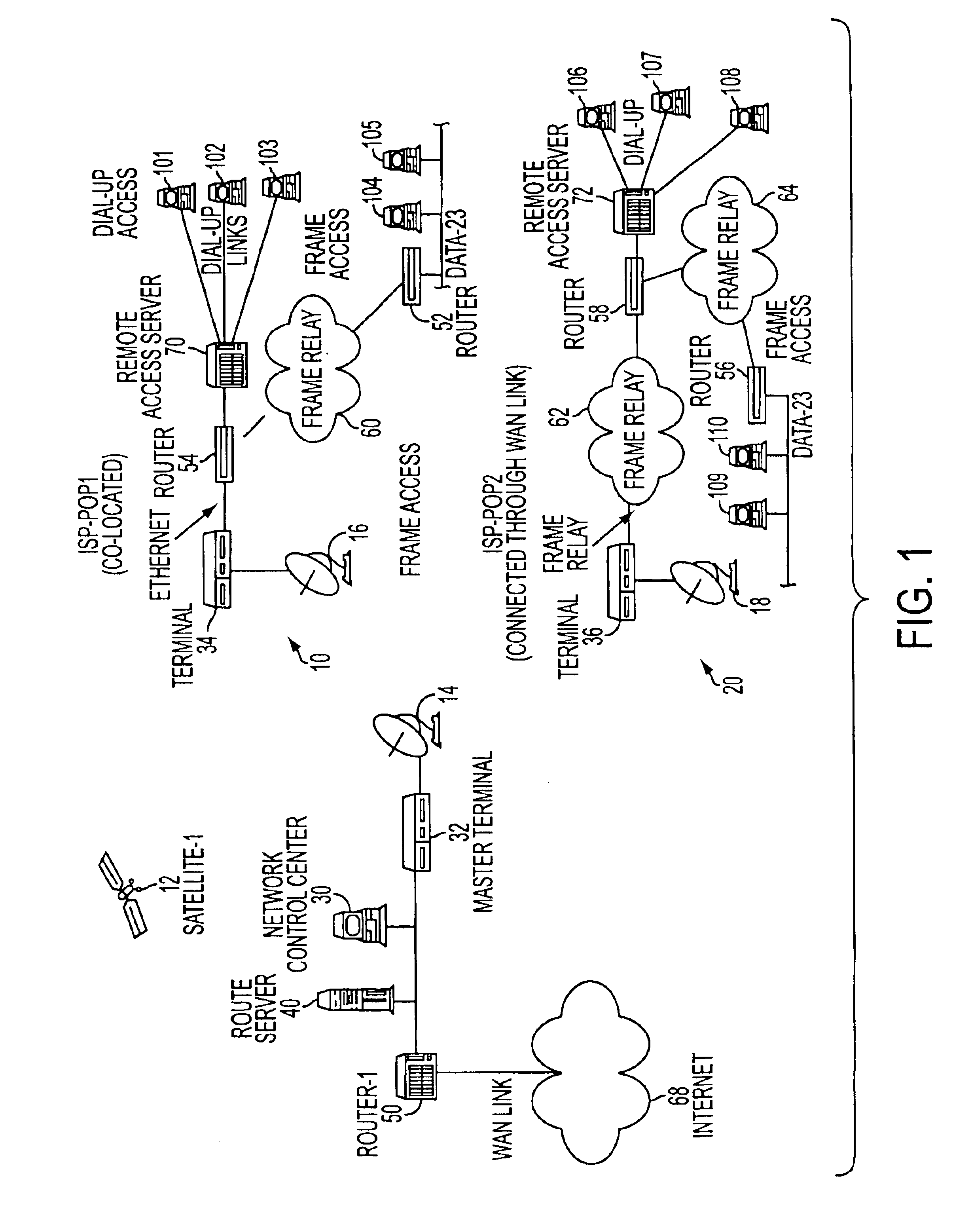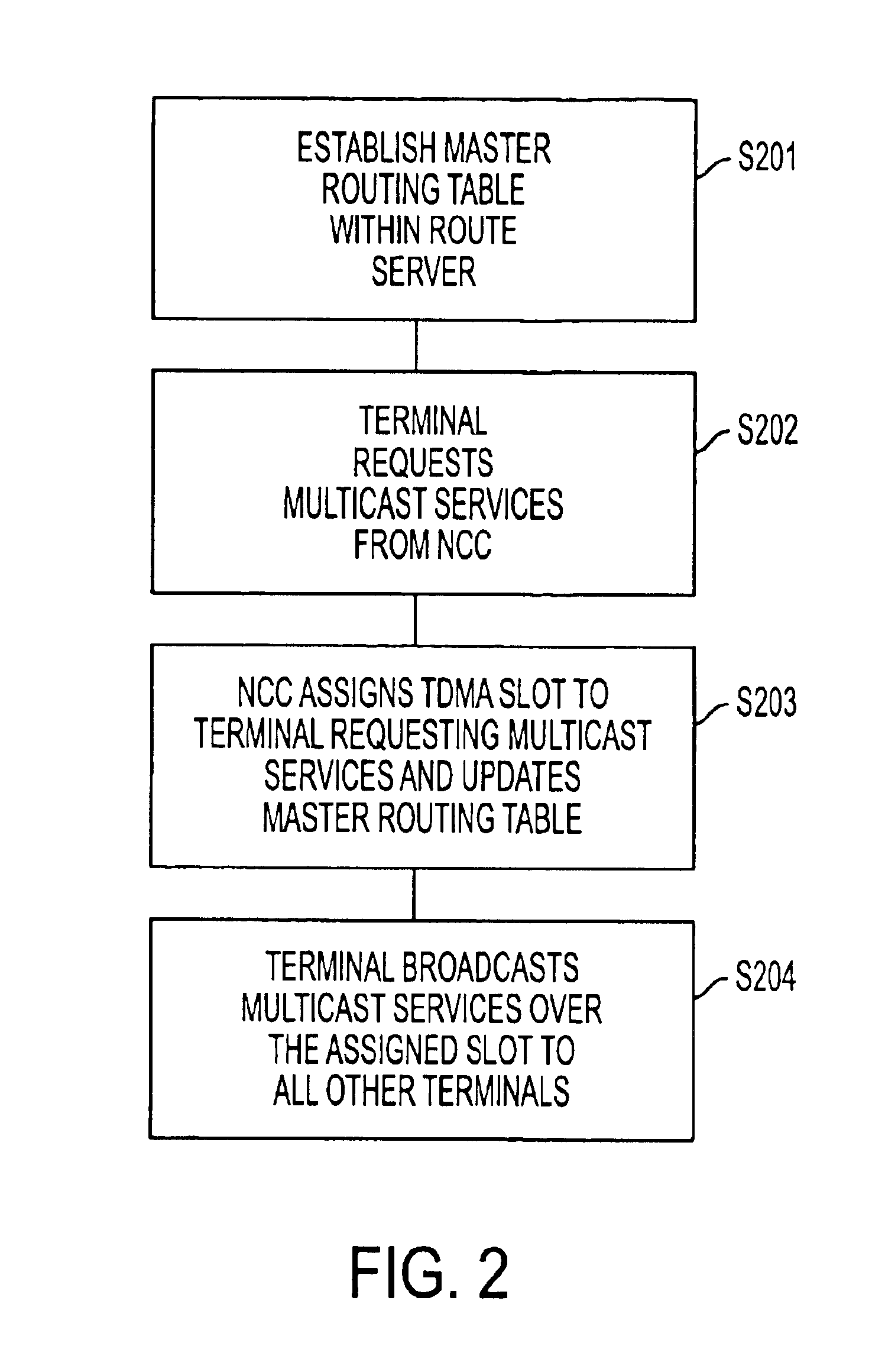IP multicasting in mesh TDMA satellite networks
a satellite network and multicasting technology, applied in multiplex communication, data switching networks, data switching details, etc., can solve the problems of consuming a lot of memory, unable to support multicast routing protocols at the terminal, and finding such available slots can become a formidable problem, etc., to achieve the effect of increasing memory, facilitating upgrade, and increasing processing power
- Summary
- Abstract
- Description
- Claims
- Application Information
AI Technical Summary
Benefits of technology
Problems solved by technology
Method used
Image
Examples
Embodiment Construction
[0022]An end-to-end network configuration which supports IP services over a mesh satellite network is shown in FIG. 1.
[0023]Such a network can be used to provide connectivity via satellite-112 and satellite dishes 14, 16, 18 to Internet Service Providers, e.g., 10 or 20, and can also be used to connect corporate sites. Routers 52, 54, 56 and 58 connect the terminals 34 and 36, possibly via frame relays 60, 62, 64 (or via an ethernet connection), to remote access servers 70, 72, and / or to various dial-up access units 101-110. The network control center (NCC) 30 is located at one site and it is typically a workstation which runs software responsible for configuring, controlling and monitoring the entire network of satellite terminals. The terminal 32 at that site is like any other terminal 34, 36 in the network, but is referred to as the master terminal for clarity. Such a network configuration is typical of most mesh satellite networks. An addition to the normal network configuration...
PUM
 Login to View More
Login to View More Abstract
Description
Claims
Application Information
 Login to View More
Login to View More - R&D
- Intellectual Property
- Life Sciences
- Materials
- Tech Scout
- Unparalleled Data Quality
- Higher Quality Content
- 60% Fewer Hallucinations
Browse by: Latest US Patents, China's latest patents, Technical Efficacy Thesaurus, Application Domain, Technology Topic, Popular Technical Reports.
© 2025 PatSnap. All rights reserved.Legal|Privacy policy|Modern Slavery Act Transparency Statement|Sitemap|About US| Contact US: help@patsnap.com



